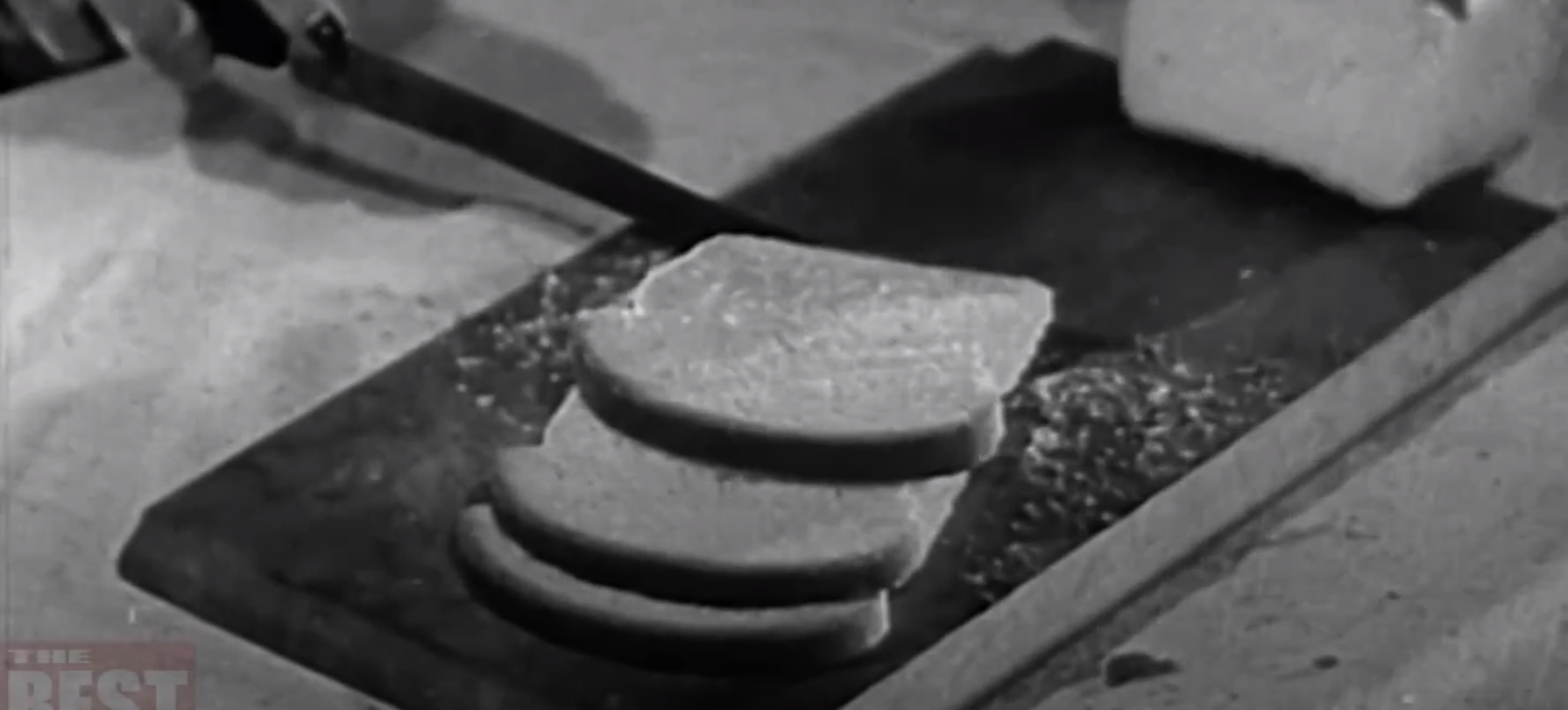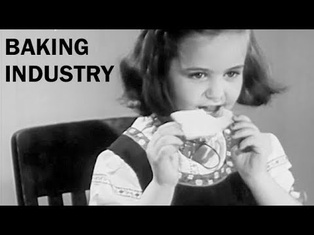Filters
How Bread Was Made in the 1940s
This 1946 vocational guidance film does an excellent job of surveying the baking industry as it sat in the 40’s. It shows the various steps and methods in bread making, and discusses how one trains for these jobs, and the difference between a large commercial bakery, and a small mom & pop bakery (which are rather rare anymore). The film includes footage of the full process of baking bread at the Schulze Baking Company Plant (Interstate Bakeries Corporation) in Chicago, Illinois.
These 'Your Life's Work' films are pretty funny, as they present 'qualifications' to what is needed to be a baker, which of course involves physics, chemistry and mathematics. A wide variety of bakery jobs are shown and described specifically here, like the pan loader. "The pan loader loads the dough into the pan".
CONTEXT / HISTORICAL BACKGROUND
Bread is a staple food prepared from a dough of flour and water, usually by baking. Throughout recorded history it has been popular around the world and is one of the oldest artificial foods, having been of importance since the dawn of agriculture.
Proportions of types of flour and other ingredients vary widely, as do modes of preparation. As a result, types, shapes, sizes, and textures of breads differ around the world. Bread may be leavened by processes such as reliance on naturally occurring sourdough microbes, chemicals, industrially produced yeast, or high-pressure aeration. Some bread is cooked before it can leaven. Non-cereal ingredients such as fruits, nuts and fats may be included. Commercial bread commonly contains additives to improve flavor, texture, color, shelf life, and ease of manufacturing.
Bread is served in various forms with any meal of the day. It is eaten as a snack, and used as an ingredient in other culinary preparations, such as sandwiches, and fried items coated in bread crumbs to prevent sticking. It forms the bland main component of bread pudding, as well as of stuffings designed to fill cavities or retain juices that otherwise might drip out.
Bread has a social and emotional significance beyond its importance as nourishment. It plays essential roles in religious rituals and secular culture. Its prominence in daily life is reflected in language, where it appears in proverbs, colloquial expressions ("He stole the bread from my mouth"), in prayer ("Give us this day our daily bread") and in the etymology of words, such as "companion" (from Latin com "with" + panis "bread").
Bread is usually made from a wheat-flour dough that is cultured with yeast, allowed to rise, and finally baked in an oven. The addition of yeast to the bread explains the air pockets commonly found in bread. Owing to its high levels of gluten (which give the dough sponginess and elasticity), common or bread wheat is the most common grain used for the preparation of bread, which makes the largest single contribution to the world's food supply of any food.
Bread is also made from the flour of other wheat species (including spelt, emmer, einkorn and kamut). Non-wheat cereals including rye, barley, maize (corn), oats, sorghum, millet and rice have been used to make bread, but, with the exception of rye, usually in combination with wheat flour as they have less gluten.
World War 2 directly affected bread industries in the UK ant the US. Baking schools closed during this time so when the war did eventually end there was an absence of skilled bakers. This resulted in new methods being developed to satisfy the world’s desire for bread. Methods like: adding chemicals to dough, premixes and specialized machinery. Unfortunately, these old methods of baking were almost completely eradicated when these new methods were introduced and became industrialized. The old methods were seen as unnecessary and financially unsound, during this period there were not many traditional bakeries left.
Sliced bread is a loaf of bread that has been sliced with a machine and packaged for convenience. It was first sold in 1928, advertised as "the greatest forward step in the baking industry since bread was wrapped". This led to the popular phrase "greatest thing since sliced bread". During 1943, U.S. officials imposed a short-lived ban on sliced bread as a wartime conservation measure.
How Bread Was Made in the 1940s | The Baking Industry | Vocational Guidance Film | 1946

YouTube allows users to upload, view, rate, share, add to playlists, report, comment on videos, and subscribe to other users. It offers a wide variety of user-generated and corporate media videos. Available content includes video clips, TV show clips, music videos, short and documentary films, audio recordings, movie trailers, live streams, and other content such as video blogging, short original videos, and educational videos. Most content on YouTube is uploaded by individuals, but media corporations including CBS, the BBC, Vevo, and Hulu offer some of their material via YouTube as part of the YouTube partnership program. Unregistered users can only watch (but not upload) videos on the site, while registered users are also permitted to upload an unlimited number of videos and add comments to videos.




